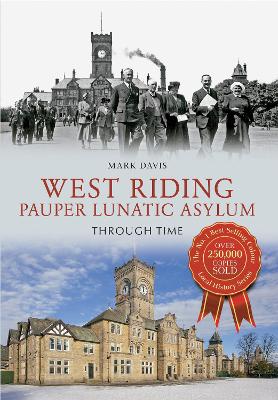Through Time
4 total works
Situated in the Pembrokeshire Coast National Park on the western shore of Carmarthen Bay, Tenby and Saundersfoot share a singular beauty. They are both surrounded by striking scenery that casts a spell over visitors and entices them back year after year. Through a fascinating collection of photographs we explore how the summer holiday in this 'Little England Beyond Wales' has changed and evolved over the last century. Mark Davis touches on the rich industrial past that linked Saundersfoot to the production of both iron and the finest quality anthracite coal, the only coal that Queen Victoria allowed to power the Royal Yacht. The popular resort of Tenby is also explored, which inspired the artist Charles Norris to produce beautiful etchings capturing scenes of the walled town prior to its growth through time into the attractive summer resort that we enjoy today.
During the eighteenth century the plight of those considered insane was dismal. Many were locked up in madhouses or chained in the workhouse, their illnesses ignored. It was only with the advent of the Industrial Revolution that reform came into place. Within the West Riding of Yorkshire the first steps in reform were taken by the Tuke family who built the Retreat at York, instrumental in bringing a new moral, caring attitude that was quickly adopted across the country. Through our journey in time we discover how former asylums in York, Wakefield, Sheffield, Menston and Huddersfield changed over the centuries. These sprawling institutions were self-contained, isolated villages in their own right. With the aid of fascinating photographs, a formidable history emerges from an age where it is estimated that at least 30 per cent of the asylum population were unjustly incarcerated without crime or foundation.
Prior to the nineteenth century, Bradford was very much a backwater. After that it was to become the metropolis of the worsted industry and enjoyed a prosperity scarcely equalled by any other portion of the kingdom. It was said at the time that the real energy of Yorkshire centred in Bradford. The times of growth were astounding and in 1897, when the town received its city status, Bradford truly was magnificent.Wherever you go in Bradford you cannot escape its rich industrial past. Many of the old mills remain, either converted to housing or awaiting demolition. Bradford Through Time goes to show us in many ways what we have lost, many of the older images display a way of life that appears rich and energetic with a real pride. You may be forgiven for thinking in some cases that we have gone backwards and not forwards in time.
During her rise to fame Ilkley was often described in romantic terms by the Victorian traveller. Home to the oldest literary festival in the North of England Ilkley is clearly characterised by her Victorian architecture. Situated in the heart of Wharfdale, she is as pleasing to the eye today as she was a century ago. Through an enticing collection of photographs we explore how this fashionable spa town with its enchanting local scenery has grown in popularity. Mark Davis touches on the rich heritage that links Ilkley to the famous Hydrotherapy introduced in 1843 and the English Naturalist Charles Darwin. Ilkley was to firmly establish herself as an extremely popular spa and recreational town of the railway age. Such was her notoriety the Victorians were easily enticed in their droves to take in the pure and abundant springs alongside the open moorlands and green meadows.



